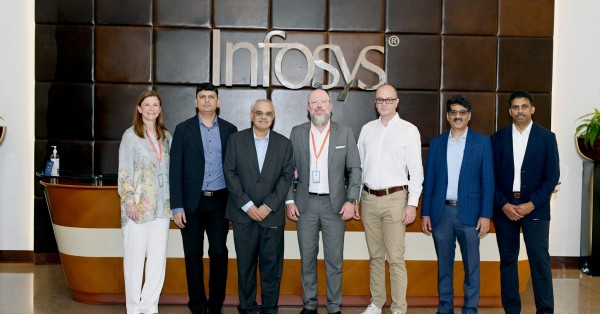As telecom operators strive for more flexible, scalable, and cost-effective network architectures, Open RAN (Radio Access Network) has become a key pillar in the evolution of mobile networks. By decoupling hardware from software and embracing open interfaces, Open RAN presents a transformative approach that empowers operators with greater choice, innovation, and vendor diversity.
Yet, deploying Open RAN at scale is not without its challenges. While the technical foundation is increasingly solid, operationalizing Open RAN across large and diverse network environments requires a strategic application of real-world experience, robust integration models, and strong ecosystem collaboration.
Unlocking the Benefits of Open RAN Architecture
At its core, Open RAN promotes interoperability between network components from different vendors by using standardized interfaces. This eliminates traditional vendor lock-in, encourages competition, and accelerates innovation.
Operators benefit from the flexibility to mix and match solutions based on regional needs, technical requirements, or deployment scenarios—urban, rural, or indoor. This modular approach can significantly lower the total cost of ownership (TCO) while enabling faster rollout of new features and capabilities.
How Global Operators Are Deploying Open RAN in Live Networks
Several major telecom operators have already begun deploying Open RAN in live networks, revealing valuable insights into the opportunities and complexities involved.
NTT Docomo: Multivendor at Scale
NTT Docomo has implemented one of the world’s largest multivendor Open RAN networks. Starting with a limited vendor set, their network has grown to include four CU/DU vendors and over 30 types of radio units, deployed nationwide to support more than 50 million 5G subscribers.
This level of scale was achieved through meticulous testing, configuration alignment, and process optimization. What once took six months to integrate a new vendor can now be done in a week—showcasing the maturity of Open RAN standards and tools.
AT&T’s: : Embracing Open Network Management
Rather than focusing solely on open fronthaul, AT&T is prioritizing open network management. Their approach centers on building a robust Service Management and Orchestration (SMO) platform to unify the control of RAN, small cells, and third-party applications across the network.
This platform-driven model enables partners to plug into the network more easily, helps reduce operational complexity, and supports large-scale automation. It also allows for the integration of new radio and baseband vendors, enhancing flexibility without compromising reliability.
Vodafone‘s Innovative Implementation Strategies
Vodafone has been implementing Open RAN in various European countries and Africa, focusing on rural and underserved areas. Their approach demonstrates how Open RAN can be used to bridge the digital divide by providing cost-effective network solutions in regions that are typically less attractive for heavy infrastructure investments.
TELUS: Full Transition to Open RAN and vRAN
TELUS is taking a bold step by committing to a complete Open RAN and vRAN transformation across its 4G and 5G networks. By 2029, the operator plans to operate 100% of its RAN using virtualized, multivendor infrastructure.
Already covering 5% of its network, TELUS expects to reach 18% by the end of the year and 50% by 2027. Their strategy includes retaining legacy radios while converting basebands to virtualized systems using interface converters. This minimizes the need for costly tower upgrades while maximizing reuse of existing assets.
Qualcomm and the Role of Semiconductors
For Open RAN to succeed, it must be underpinned by high-performance, power-efficient silicon. Qualcomm has demonstrated that chipset innovation is critical to supporting the scale and economics of Open RAN.
Deployments such as a nationwide Open RAN rollout in Vietnam—spanning more than 20,000 sites—highlight how cutting-edge semiconductors can deliver Massive MIMO and carrier-grade performance, even in cost-sensitive markets.
Key Challenges in Scaling Open RAN: Integration, Security & Operations
Despite growing adoption, Open RAN introduces several challenges that operators must carefully manage:
Integration & Interoperability
While Open RAN standards provide a common framework, vendor interpretation can vary. Integrating components from different suppliers requires thorough validation, extensive testing, and ongoing optimization to ensure seamless functionality.
Security in a Disaggregated World
Open RAN introduces more interfaces and integration points, increasing the attack surface. As networks become more software-defined and cloud-native, securing the infrastructure—through encryption, intrusion detection, and anomaly monitoring—is essential.
Security must be embedded not only in interfaces but across the full software and hardware stack, including third-party apps and virtualized infrastructure.
Operational Complexity and Automation
Introducing multiple vendors brings greater flexibility but also increases operational complexity. Efficient orchestration, lifecycle management, and observability are critical to avoiding increased OPEX.
Mature implementations leverage automated deployment pipelines, SMO platforms, and AI-driven tools to simplify operations and support rapid scale.
Strategic Pillars for Successful Open RAN Deployment
The journey to large-scale Open RAN adoption is shaped by a few key strategic pillars:
1. Ecosystem Collaboration
Open RAN’s success hinges on a strong and cooperative vendor ecosystem. Strategic partnerships with software, hardware, and cloud providers allow operators to tap into pre-integrated, validated solutions that reduce time-to-market and ensure stability.
2. Standardization and Compliance
Global organizations such as the O-RAN Alliance and the Telecom Infra Project (TIP) continue to advance the maturity of specifications across fronthaul, SMO, and vRAN. Adhering to these standards ensures interoperability and accelerates the onboarding of new vendors.
3. Flexibility in Integration Models
Operators vary in their willingness and ability to act as system integrators. Larger players may take a lead role in integration, while others may rely on vendors or neutral hosts to deliver turnkey Open RAN solutions. The choice depends on internal capabilities, scale, and deployment goals.
Future Outlook: Open RAN as a Foundation for Modern Mobile Networks
Open RAN represents more than a technical shift—it signals a new operational mindset. Networks are becoming more open, more programmable, and more collaborative. As the technology matures and deployment experience deepens, Open RAN is moving beyond experimentation to become a practical foundation for modern mobile infrastructure.
From dense urban metros to remote rural regions, operators are finding ways to adapt Open RAN to their needs—paving the way for more inclusive, cost-effective, and agile network growth.
How Operators Can Realize the Promise of Open RAN
The evolution of Open RAN is accelerating. As deployments scale, the lessons learned from early adopters are becoming blueprints for success. Whether the goal is reducing cost, improving flexibility, expanding vendor diversity, or enhancing performance, Open RAN is proving to be a viable path forward.
Achieving full-scale deployment requires a combination of technological maturity, operational discipline, and trusted collaboration. With the right strategies and partners in place, Open RAN can deliver on its promise—and redefine the future of wireless networks.

































